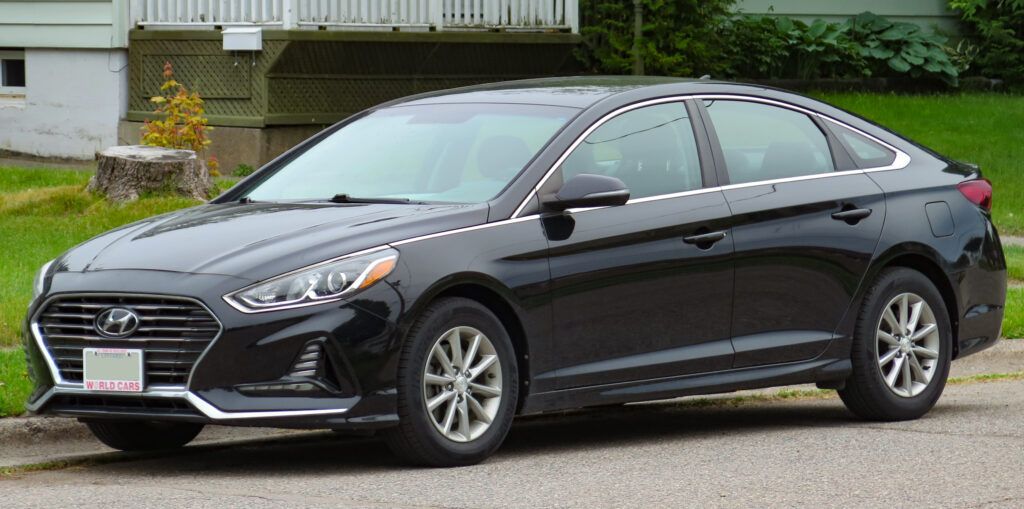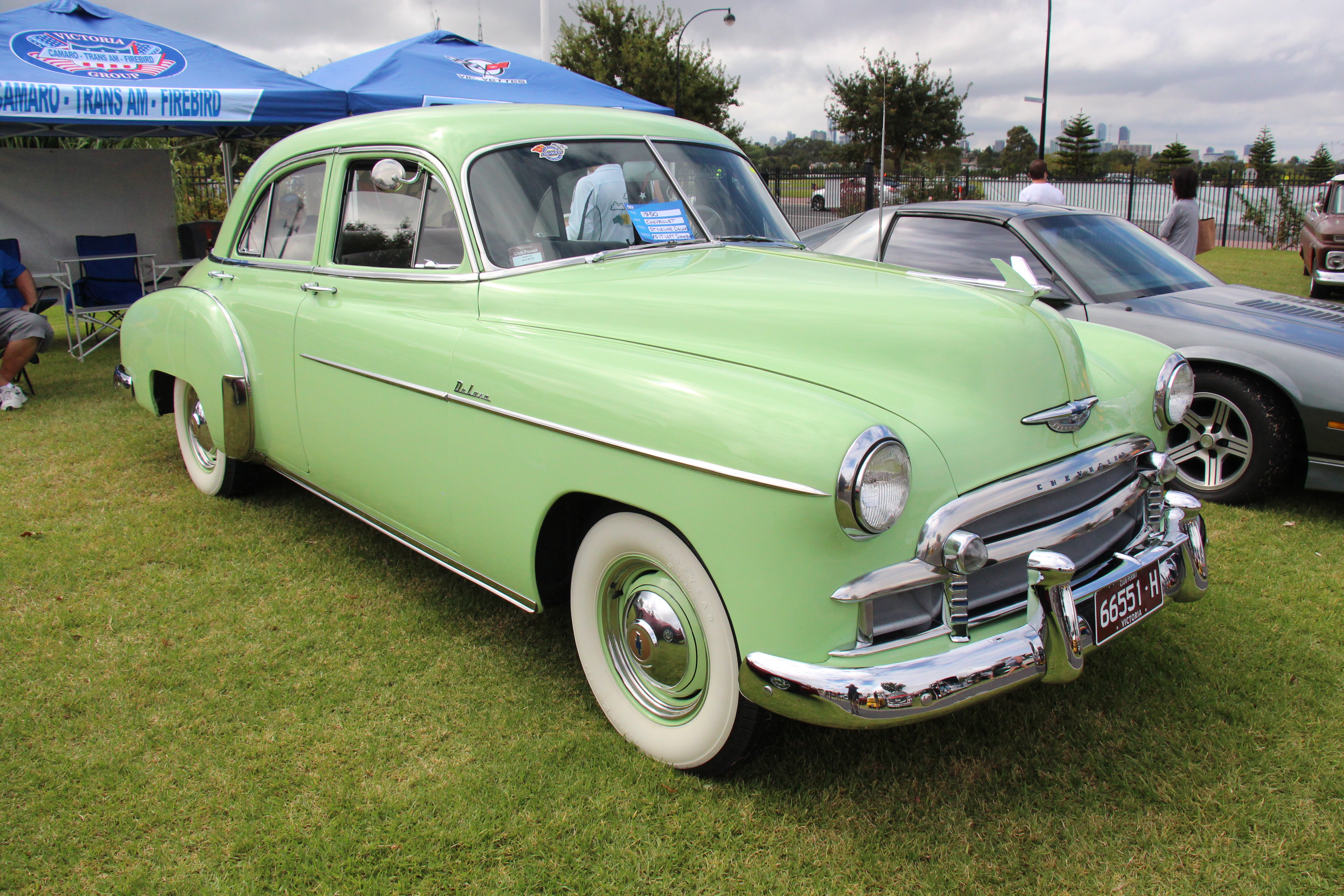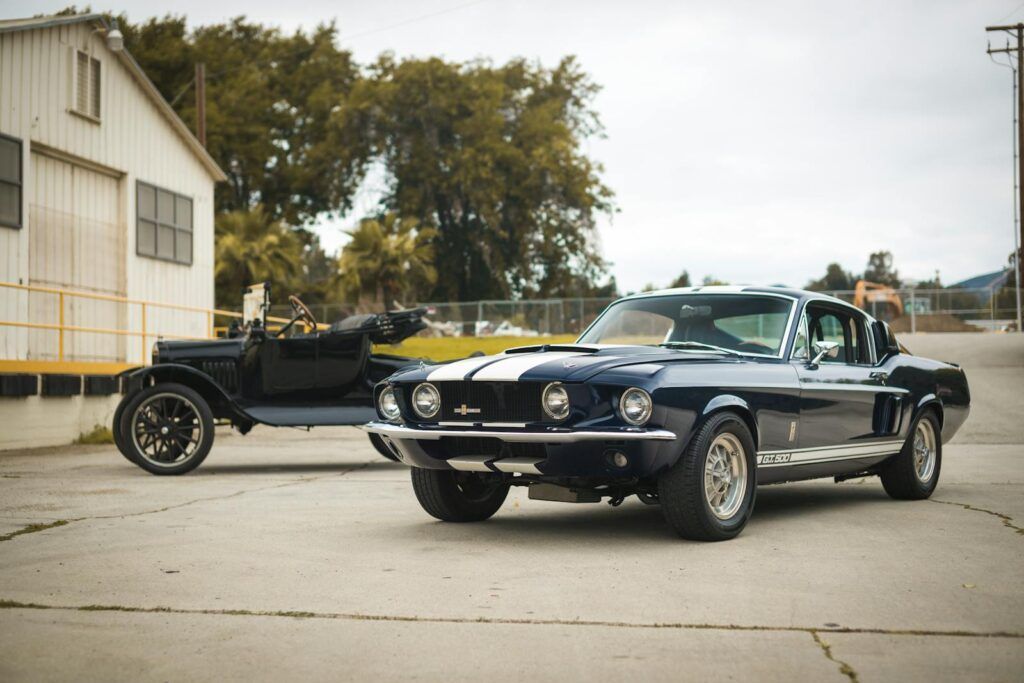
The annals of American automotive history are absolutely brimming with legends. We’re talking about chrome-laden beasts, sleek speed demons, and family cruisers that defined entire eras. These magnificent machines weren’t just transportation; they were bold statements, embodying the very spirit of innovation, boundless freedom, and, let’s be honest, sometimes a charming disregard for what we now consider fundamental safety standards. They represent a fascinating chapter where ambition often outpaced the finer points of occupant protection, crafting vehicles that stir our nostalgia but give modern safety experts nightmares.
But here’s the kicker, a stark reality check: while our hearts might still ache for the roaring engines, the distinctive growls, and the classic, sweeping lines of these bygone beauties, our modern brains (and certainly our increasingly litigious insurance companies) know unequivocally better. The roads of today are a dynamically different, far more complex environment than the open, relatively empty stretches these automotive icons once dominated. With advanced safety regulations, exponentially increased traffic density, and a universal expectation that a simple fender-bender won’t inevitably devolve into a catastrophic, fiery spectacle, some of our most beloved American classics simply don’t cut it anymore. Their glorious past, sadly, cannot negate their present-day perils.
So, buckle up (and truly mean it, because seatbelts were optional or non-existent in some of these rides) as we embark on a thrilling, yet sobering, deep dive into ten truly iconic American cars. These vehicles, despite their undeniable cool factor, profound historical significance, and magnetic allure, are objectively just too dangerous for today’s asphalt jungle. We’re not here to disparage their legendary status, but rather to appreciate how monumentally far automotive safety engineering has progressed. Trust us, your daily commute, no matter how hellish it might feel at times, is a luxurious, meticulously engineered safety cocoon compared to a casual joyride in some of these magnificent, rolling paradoxes.
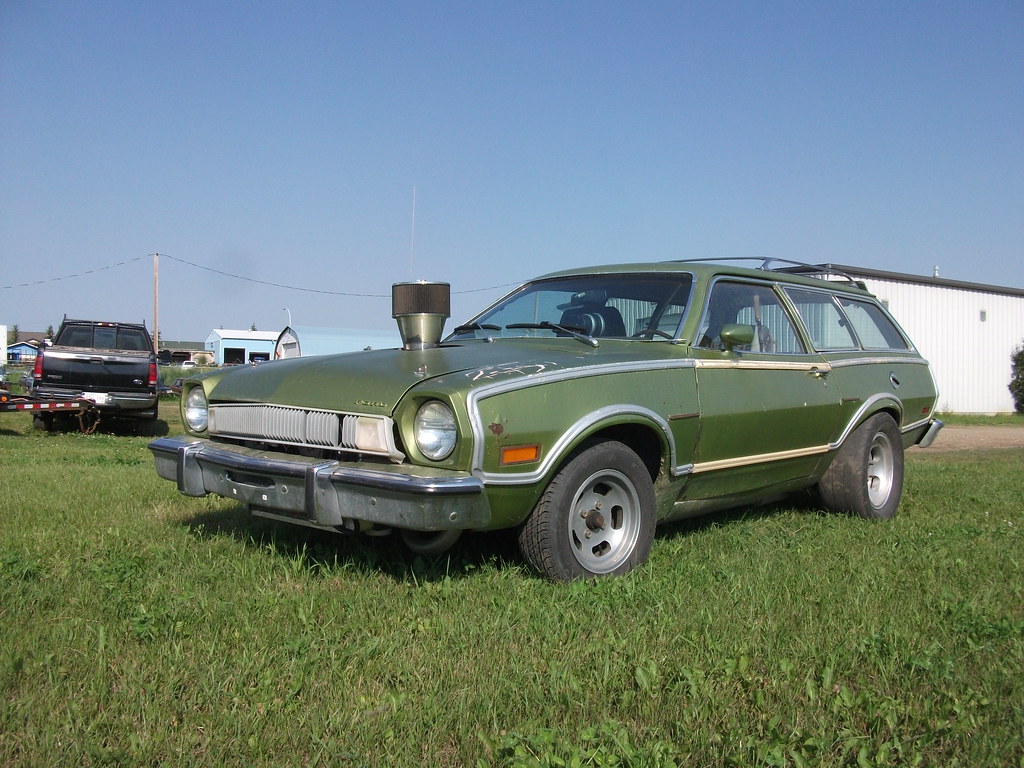
1. **Ford Pinto**The Ford Pinto, oh the Pinto! It rolls off the tongue like a cautionary whisper, a punchline for automotive safety gone horribly awry. This compact charmer from the 1970s started life with an earnest promise, heralded for its appealing affordability and stylish, contemporary lines – a genuine compact car for the masses. But underneath that seemingly innocent exterior, a design flaw so catastrophic was baked in, it etched its name into the automotive hall of shame with a fiery, indelible mark.
We’re talking, of course, about the fuel tank, folks. It was nestled with alarming proximity to the rear bumper, a placement that, upon even a relatively minor rear impact, essentially transformed the car into a mobile Molotov cocktail. NHTSA reports, exhaustive investigations, and a painful slew of lawsuits confirmed the terrifying, unconscionable fire risks inherent in this design. Imagine a simple fender-bender, a common mishap on any road, escalating almost instantly into an inferno – that was the grim reality for some profoundly unlucky Pinto owners.
Back in 1971, Motor Trend might have praised the Pinto’s “nimble handling,” but they couldn’t possibly predict the automotive inferno that awaited. It’s a sobering reminder that sometimes, what seems like a minor engineering choice can, in fact, have devastating, life-or-death consequences. Today, when we see even the most basic subcompacts routinely earning 5-star safety ratings, it highlights just how monumentally far we’ve come from the Pinto’s “adequately appointed” cabin, which, unbeknownst to Car and Driver in 1974, hid such a critical and lethal vulnerability.
The Ford Pinto serves as an enduring cautionary tale, a stark lesson in the delicate and often contentious balance between cost-efficiency, speed of production, and fundamental human safety. Its legacy isn’t celebrated for its style or its initial performance, but rather for the profound impact it had on corporate accountability and the critical importance of robust safety standards for every vehicle on our roads. Modern fuel systems, with their multiple safety cutoffs, reinforced tanks, and strategic placement, owe a silent, yet profound, debt to the tragic lessons learned from this infamous, fire-prone Ford.
Product on Amazon: AMT 1/25 1977 Ford Pinto, Model Kit, AMT1129M
Brand: AMT
Binding: Product Group: Toy
Price: 28.44 USD
Rating: 4.2 Total reviews: 66
Age Range (Description): Kid
Color: White
Theme: Vehicle
Item dimensions L x W x H: 1 x 1 x 1 inches
Features:
1. Molded-in white for easy painting
2. All-new decal sheet loaded with optional fun designs
3. Vinyl tires
Shopping on Amazon >>
Car Model Information: 1978 Ford Pinto RUNABOUT HATCHBACK
Name: Ford Pinto
Caption: Ford Pinto
Manufacturer: Ford Motor Company
Aka: Mercury Bobcat
Production: September 1970 – July 1980
ModelYears: 1971–1980 (Pinto),1974–1980 (Bobcat)
Assembly: Edison, New Jersey,Milpitas, California
Designer: Robert Eidschun (1968)
Class: Subcompact car
BodyStyle: Sedan (automobile),sedan delivery,station wagon,hatchback
Related: #Mercury Bobcat (1974–1980),Ford Mustang (second generation)
Layout: Front-engine, rear-wheel-drive layout
Chassis: Unibody
Engine: unbulleted list
Abbr: on
Disp: Ford Cologne engine
Transmission: unbulleted list
Wheelbase: 94.0 in
Length: 163 in
Width: 69.4 in
Height: 50 in
Weight: convert
Predecessor: Ford Cortina#Mark II (1966–1970)
Successor: Ford Escort (North America)
Categories: 1980s cars, Articles with short description, Cars discontinued in 1980, Cars introduced in 1970, Commons category link from Wikidata
Summary: The Ford Pinto is a subcompact car that was manufactured and marketed by Ford Motor Company in North America from 1970 until 1980. The Pinto was the first subcompact vehicle produced by Ford in North America.
The Pinto was marketed in three body styles throughout its production: a two-door fastback sedan with a trunk, a three-door hatchback, and a two-door station wagon. Mercury offered rebadged versions of the Pinto as the Mercury Bobcat from 1975 until 1980 (1974–1980 in Canada). Over three million Pintos were produced over its ten-year production run, outproducing the combined totals of its domestic rivals, the Chevrolet Vega and the AMC Gremlin. The Pinto and Mercury Bobcat were produced at Edison Assembly in Edison, New Jersey, St. Thomas Assembly in Southwold, Ontario, and San Jose Assembly in Milpitas, California.
Since the 1970s, the safety reputation of the Pinto has generated controversy. Its fuel-tank design attracted both media and government scrutiny after several deadly fires occurred when the tanks ruptured in rear-end collisions. A subsequent analysis of the overall safety of the Pinto suggested it was comparable to other 1970s subcompact cars. The safety issues surrounding the Pinto and the subsequent response by Ford have been cited widely as business ethics and tort reform case studies.
Get more information about: Ford Pinto
Buying a high-performing used car >>>
Brand: Ford Model: Pinto
Price: $18,995 Mileage: 88,217 mi.
Read more about: Boomers, Get Ready to Rev! These 12 Iconic ’60s Car Models Still Drive Our Dreams
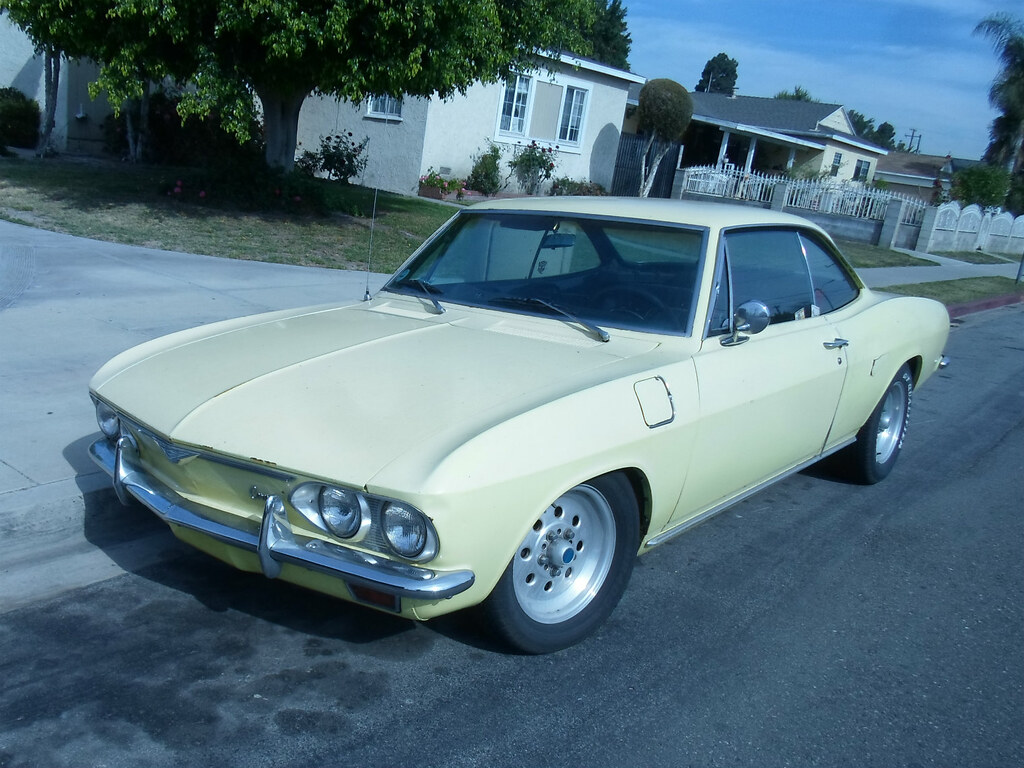
2. **Chevrolet Corvair**Next up in our retrospective of magnificent automotive mayhem, we have the Chevrolet Corvair, a car whose name is practically synonymous with the phrase “Unsafe at Any Speed.” Produced throughout the swinging sixties, the Corvair emerged as an audacious engineering marvel, sporting a unique rear-engine design that gave it a distinct, almost European flair – a bold departure from conventional American automotive philosophy. Road & Track even gushed about its “European feel” back in 1960.
However, that innovative and undeniably sleek rear-engine layout came with a significant, ultimately catastrophic, caveat: notoriously treacherous handling characteristics. Specifically, the alarming lack of a rear stabilizer bar made it notoriously prone to oversteering, a charming trait that could, with disarming speed, turn a seemingly innocuous sharp corner into an unplanned, terrifying pirouette. This wasn’t just a minor quirk; it was a fundamental instability that, when pushed, could effortlessly lead to rollovers and a complete loss of control.
It was this very perilous characteristic that catapulted a then-little-known consumer advocate, Ralph Nader, into national prominence with his seminal 1965 book, “Unsafe at Any Speed.” Nader’s scathing, meticulously researched critique laid bare the Corvair’s inherent dangers, transforming it almost overnight into the poster child for perceived automotive negligence and fundamentally altering the national conversation around vehicle safety. This groundbreaking book forcefully pushed for the increased safety regulations that forever changed the auto industry.
While today’s sophisticated rear-engine vehicles, like the venerable and exceptionally engineered Porsche 911, prove that the concept can work beautifully and safely with proper modern engineering and advanced stability control systems, the Corvair stands as a stark reminder of the often-perilous early attempts. Its enduring legacy is not merely about its sleek design or affordability, but profoundly about the seismic impact it had on the establishment of rigorous safety standards, making every subsequent car on the road just a little bit safer thanks to its dangerous, indelible lessons.
Product on Amazon: Hot Wheels Car Culture Circuit Legend, Premium 1:64 Scale Die-Cast Chevy Corvair Yenko Stinger Car, Collectable Vehicle
Brand: Hot Wheels
Binding: Toy Product Group: Toy
Price: 11.95 USD
Rating: 4.8 Total reviews: 975
Features:
1. The Hot Wheels Car Culture Circuit Legend line features awesome 1:64 scale vehicles with realistic castings and authentic decos.
2. This premium assortment features a variety of special categories and themes that appeal to kids and collectors alike.
3. Kids ages 3 and up and collectors will love the realistic detail and the fantastic features of both new and retro vehicles for either play or display.
4. New Hot Wheels models and castings enhance collectability.
5. Car enthusiasts will find a brilliant selection of vehicles known around the world to add to their collections.
Shopping on Amazon >>
Car Model Information: 1964 Chevrolet Corvair Monza
Caption: 1964 Chevrolet Corvair Monza
Name: Chevrolet Corvair
Manufacturer: Chevrolet
Production: 1960–1969
Platform: GM Z platform
Chassis: Unibody
ModelYears: 1960–1969
Assembly: United States,Kansas City, Missouri,Oakland, California,Van Nuys,St. Louis,Flint, Michigan,Belgium,Canada,Mexico,South Africa,Switzerland,Venezuela
Class: Compact car
Successor: Chevrolet Vega
Layout: Rear-engine, rear-wheel-drive layout
Categories: All Wikipedia articles written in American English, All articles lacking in-text citations, All articles needing additional references, All articles with dead external links, All articles with specifically marked weasel-worded phrases
Summary: The Chevrolet Corvair is a rear-engined, air-cooled compact car manufactured and marketed by Chevrolet over two generations between 1960 and 1969. The Corvair was a response to the increasing popularity of small, fuel-efficient automobiles, particularly the imported Volkswagen Beetle and American-built compacts like the Rambler American and Studebaker Lark.
The first generation (1960–1964) was offered as a four-door sedan, two-door coupe, convertible, and four-door station wagon. A two- and four-door hardtop and a convertible were available second-generation (1965–1969) variants. The Corvair platform was also offered as a subseries known as the Corvair 95 (1961–1965), which consisted of a passenger van, commercial van, and pickup truck variant. Total production was approximately 1.8 million vehicles from 1960 until 1969.
The name “Corvair” was first applied in 1954 to a Corvette-based concept with a hardtop fastback-styled roof, part of the Motorama traveling exhibition. When applied to the production models, the “air” part referenced the engine’s cooling system.
A prominent aspect of the Corvair’s legacy derives from controversy surrounding the handling of early models equipped with rear swing axles, articulated aggressively by Ralph Nader’s Unsafe at Any Speed but tempered by a 1972 Texas A&M University safety commission report for the National Highway Traffic Safety Administration (NHTSA) which found that the 1960–1963 Corvair possessed no greater potential for loss of control in extreme situations than contemporary compacts.
To better counter popular inexpensive subcompact competitors, notably the Beetle and Japanese imports such as the Datsun 510, GM replaced the Corvair with the more conventional Chevrolet Vega in 1970.
Get more information about: Chevrolet Corvair
Buying a high-performing used car >>>
Brand: Chevrolet Model: Corvair
Price: $29,988 Mileage: 74,787 mi.
Read more about: You Probably Never Knew These 14 Celebrities Were Involved in Deaths, And The Stories Are Wild
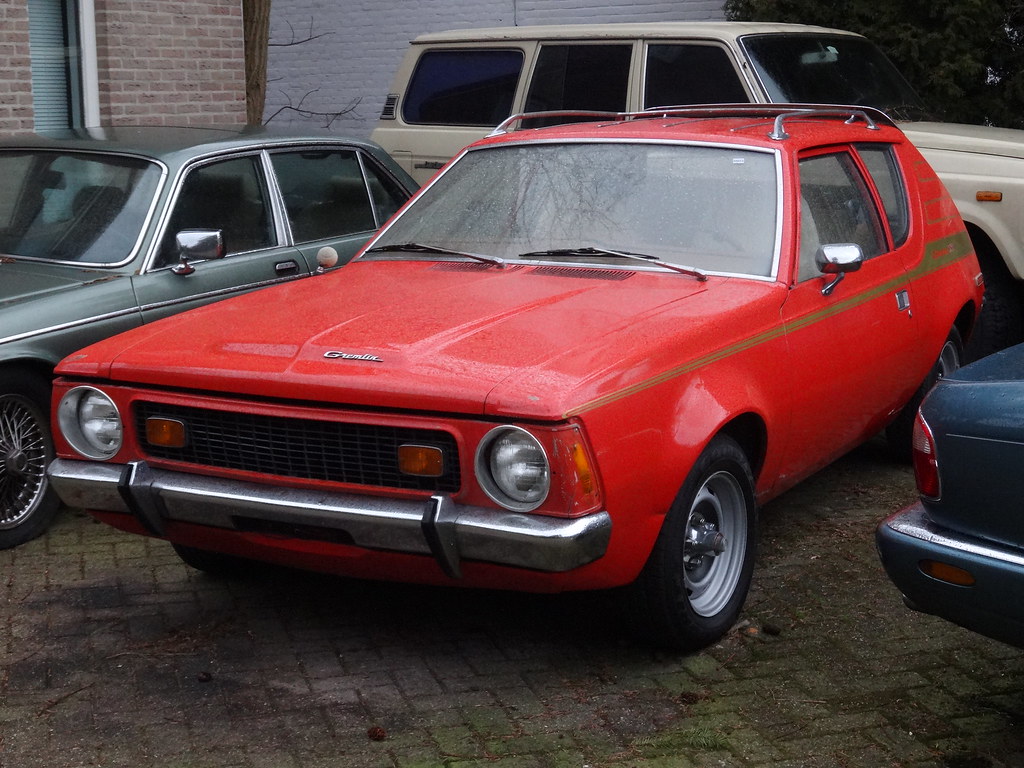
3. **AMC Gremlin**Ah, the AMC Gremlin, a car that truly embodied the spirit of “love it or hate it” design, perhaps more than any other vehicle of its era. Introduced in 1970, this compact wonder with its distinctively chopped-off rear end was undeniably quirky, a bold and almost defiant aesthetic statement that certainly turned heads. It was, as Road & Track noted in its 1970 coverage, “determinedly different,” a design choice that reportedly helped shave manufacturing costs and gave it an unmistakable, if somewhat unfinished, silhouette.
However, beyond its polarizing looks, the Gremlin carried some significant, indeed dangerous, baggage in the safety department. Its highly unconventional design, which unapologetically prioritized styling and cost-saving measures, came at the direct expense of crucial handling dynamics and structural integrity. Critics were quick to point out its poor road manners, especially its alarming propensity to become difficult to control once speeds began to climb. Attempting to execute a sudden maneuver in a Gremlin at highway speeds was a gamble with physics and fate.
The short wheelbase, an unavoidable consequence of its truncated, compact nature, severely exacerbated these inherent handling issues, making it prone to alarming instability, particularly in anything resembling spirited driving. Furthermore, its structural integrity left much to be desired, offering genuinely weak crash protection that made even seemingly minor accidents far more dangerous than they ought to be. It conspicuously lacked any real crumple zones or advanced restraint systems, essentially leaving its occupants at the mercy of raw impact forces.
Today, the Gremlin still holds a peculiar charm for a niche community of collectors who appreciate its unique and defiant place in automotive history. But it also stands as a stark and enduring reminder that style, while undoubtedly appealing, should never, ever completely trump the fundamental, non-negotiable need for a vehicle to be utterly safe, predictably stable, and structurally sound on the increasingly demanding roads of the modern world. It’s a wild, distinctively American ride, but one that unequivocally does not belong on today’s crowded, fast-paced highways.
Product on Amazon: Motormax 1974 AMC Gremlin X 1:24 Scale Diecast Model Forgotten Classics Series 79045 Blue
Brand: Motormax
Binding: Toy Product Group: Home
Price: 15.41 USD
Rating: 5.0 Total reviews: 25
Features:
1. Ford Official Licensed
2. 1:24 scale measuring 7.5 x 3 x 2.5 inches
3. Made of diecast metal with plastic parts, and rubber tires.
4. Openable Hood and Doors
5. Pre-assembled, not a building kit
Shopping on Amazon >>
Read more about: 11 SUVs That Promise Adventure But Deliver Owners Immediate Regret
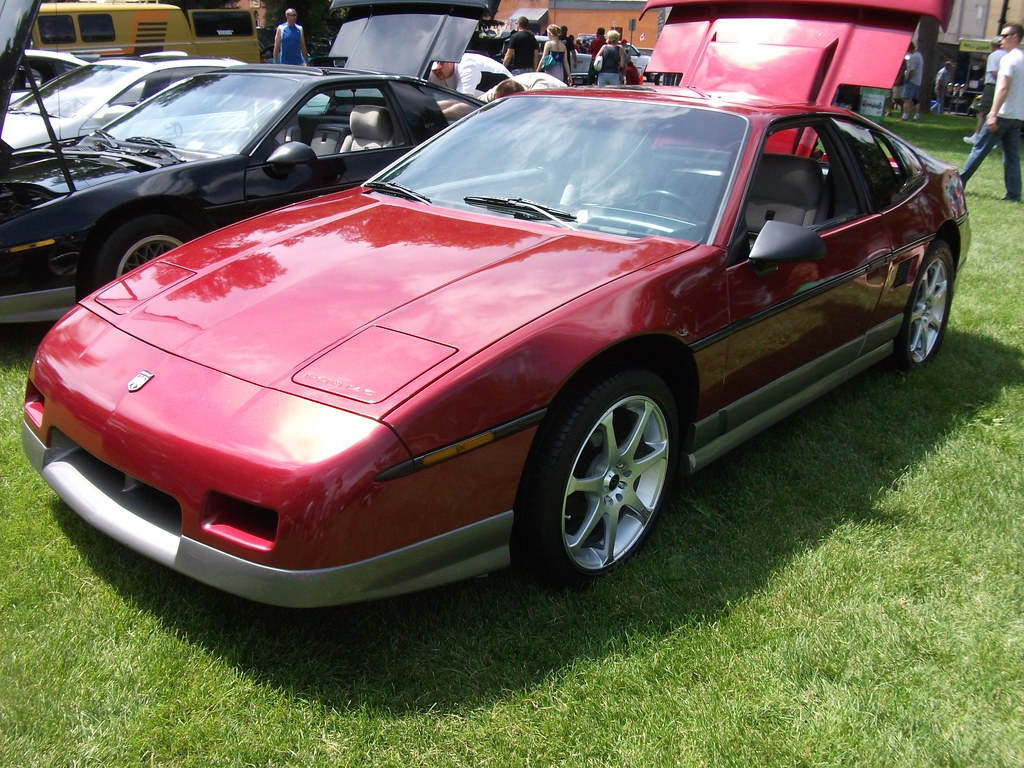
4. **Pontiac Fiero**The Pontiac Fiero, launched in 1984, arrived on the automotive scene as a genuinely thrilling concept: an affordable, American-made, mid-engine sports car! Its sleek, almost exotic aesthetics and revolutionary configuration promised the kind of thrilling, high-performance driving experiences typically associated with far more expensive, European-bred machines. For a brief, shining moment, it seemed Pontiac had truly captured lightning in a bottle, offering a tantalizing taste of Ferrari-esque engineering to the everyday American masses.
However, the Fiero’s brilliant flame of innovation was, tragically, a bit too literal, a cruel twist of fate for an otherwise ambitious project. Early models, much to the horror of their owners and Pontiac itself, were plagued by a terrifying and extensively documented flaw: engine fires. We’re not talking about a little smoke; we’re talking about actual, full-blown infernos caused by persistent oil leaks and severe overheating issues that could cause the Fiero to spontaneously combust while cruising innocently down the highway. This was a nightmare scenario for any driver.
These alarming and widely publicized incidents, which understandably led to significant and costly safety recalls, completely overshadowed the Fiero’s otherwise innovative design and undeniable visual appeal. The initial widespread enthusiasm for an affordable, American-made mid-engine sports car quickly soured, transforming into widespread public concern and, eventually, a deeply tarnished reputation that Pontiac struggled immensely to shake off. It was a tragic, high-profile testament to the critical importance of robust engineering, meticulous design, and rigorous, comprehensive testing in the automotive production process.
While later iterations of the Fiero did indeed see significant improvements and corrections to these dangerous flaws, the initial damage to its public perception was already done, and its image as a fire-prone hazard never quite faded. Today, a dedicated and passionate community of enthusiasts still appreciates the Fiero for its daring concept and undeniable potential. Yet, its story remains a potent and enduring reminder that even the boldest, most revolutionary designs require meticulous execution and unwavering attention to detail to ensure both exhilarating performance and, crucially, absolute safety for those behind the wheel.
Product on Amazon: Revell 14573 1985 Pontiac Fiero GT 1:24 Scale 79-Piece Skill Level 4 Model Building Kit
Brand: Revell
Binding: Office Product Product Group: Home
Price: 24.99 USD
Rating: 4.0 Total reviews: 1
Age Range (Description): 12 years old and up
Color: Multicolor
Theme: Building, Hobbies, Model Cars
Item dimensions L x W x H: 9.33 x 6.57 x 4.33 inches
Features:
1. Revell Model Kit #14573, Skill Level 4, Contains 79-Parts, Recommended for ages 12 and up
2. Build a factory-stock 1985 Pontiac Fiero GT or personalize it with optional side scoops and a wild track-ready ram-air scoop that sits above the roof.
3. Detailed mid-mounted 2.8-liter V-6 engine can be viewed under the opening engine cover.
4. Period-perfect details include Pontiac’s unforgettable high-tech wheels and a big rear spoiler. All-new decal sheet includes factory-correct details and red pinstripes.
5. Molded in white and clear with soft black tires. Paint and glue required(not included).
Shopping on Amazon >>
Car Model Information: 1988 Pontiac Fiero Formula
Name: Pontiac Fiero
Caption: 1988 Fiero Formula
Manufacturer: Pontiac (automobile)
Production: August 1983 – August 16, 1988,370,168 produced
ModelYears: 1984 – 1988
Successor: Pontiac Solstice
Assembly: Pontiac, Michigan
Designer: Hulki Aldikacti,George Milidrag
Class: Sports car
BodyStyle: fastback,notchback
Platform: GM P platform
Layout: Rear mid-engine, rear-wheel-drive layout
Engine: {{cvt,151,CID,L,1,disp=flip,Iron Duke engine#LR8,Inline-four engine
Transmission: Turbo-Hydramatic 125,Manual transmission,Getrag 282 transmission,Isuzu
Wheelbase: 2373 mm
Abbr: on
Length: 4072 mm
Width: 1750 mm
Height: 1191 mm
Weight: 1116 to
Categories: All articles with unsourced statements, Articles with short description, Articles with unsourced statements from February 2012, Articles with unsourced statements from July 2024, Articles with unsourced statements from September 2011
Summary: The Pontiac Fiero is a rear mid-engine, light sports car manufactured and marketed by Pontiac for model years 1984 – 1988. Intended as an economical commuter car with modest performance aspirations, it was Pontiac’s first two-seater since their 1926 to 1938 coupes, and the first mass-produced, rear mid-engine car by any American manufacturer.
In addition to using 4- and 6-cylinder engines to help Pontiac meet America’s ‘CAFE’ average fuel economy requirements, the Fiero’s chassis and structure technology used non-load-bearing, composite body-panels, contributing to the car’s light-weight and its unique selling proposition. Pontiac engineers modified the design over its life to enhance its performance and reposition the two-seater closer to the implications of its sporty configuration.
The Fiero 2M4 (two-seat, mid-engine, four-cylinder) placed on Car and Driver magazine’s Ten Best list for 1984, and was the Official Pace Car of the Indianapolis 500 for 1984.
A total of 370,168 Fieros were manufactured over five years’ production, its mild performance, reliability and safety issues becoming points of criticism. The Fiero was discontinued after annual sales fell steadily.
Get more information about: Pontiac Fiero
Buying a high-performing used car >>>
Brand: Pontiac Model: Fiero
Price: $11,000 Mileage: 101,027 mi.
Read more about: Beyond the Big Blocks: Unearthing 14 Forgotten 1980s GM Muscle Cars That Command Attention Today
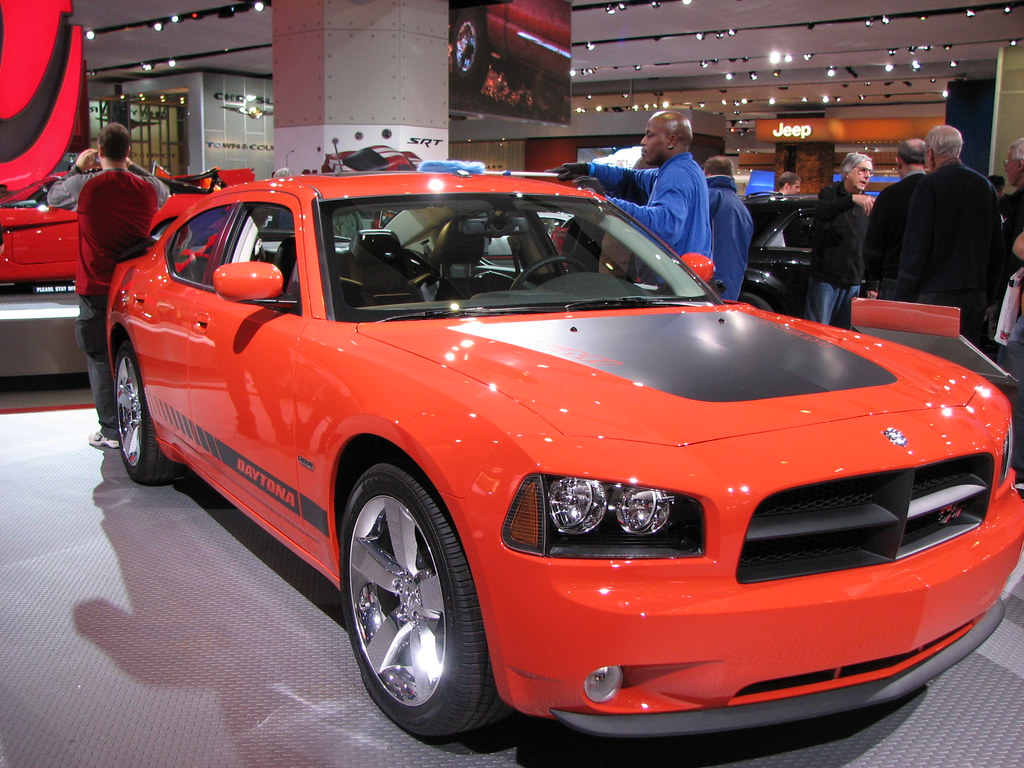
5. **Dodge Charger Daytona**Now, let’s talk about a true legend, a car so extreme it practically had “race track only” stamped on its glorious, winged rump: the 1969 Dodge Charger Daytona. This was no ordinary muscle car; it was a “Winged Warrior,” designed with a singular, unapologetic, and utterly focused purpose – to absolutely dominate NASCAR ovals and conquer the very air itself. Its iconic, elongated aerodynamic nose cone and towering, audacious rear wing weren’t just for show; they were meticulously crafted to cut through the air and generate immense downforce at blistering speeds.
And dominate it most certainly did! On the treacherous, high-banked superspeedways of NASCAR, the Daytona was an absolute beast, rewriting speed records and striking fear into the hearts of its competitors. But therein lies the critical rub: what makes a car a champion, a record-breaker on the high banks, often makes it a complete, unmanageable nightmare on your local public roads. The very design elements that forged it into a track legend rendered it utterly impractical, and frankly, quite dangerous for regular, everyday road duty.
Imagine, if you will, the sheer absurdity of trying to navigate modern city traffic in a car with a ridiculously long nose that made parking an exercise in abstract geometry and a rear wing so immense it practically obliterated any semblance of rearward visibility. Add to that its sheer, unyielding size and immense, raw power, which, without the benefit of modern power steering, advanced braking aids, or sophisticated stability control systems, transformed it into a genuine, white-knuckle handful to control. This wasn’t a casual Sunday cruiser; it was a purebred, untamed racer, inherently ill-suited for the stop-and-go reality of everyday driving.
The Dodge Charger Daytona is, and will forever be, revered by racing fans and collectors alike, standing as a magnificent monument to American ingenuity, daring design, and raw, unadulterated speed. It powerfully highlights the inherent, often dangerous, divide between highly specialized track-oriented vehicles and the multifaceted demands of practical road cars. While we absolutely adore its legendary status and incredible performance heritage, one must unequivocally admit: taking this particular rocket ship out for a casual spin on today’s crowded streets would be less a joyride and more an exercise in extreme, probably unsafe, white-knuckle terror.
Product on Amazon: Jada Toys Fast & Furious Dom’s Dodge Charger Daytona DIE-CAST Car, 1: 24 Scale Red (97060)
Brand: Jada
Binding: Toy Product Group: Toy
Price: 14.94 USD
Rating: 4.7 Total reviews: 2204
Features:
1. Opening hood, doors, trunk
2. Detailed interior
3. Exterior styling directly from the movie
4. Die Cast Replica
Shopping on Amazon >>
Car Model Information: 2021 Chrysler Pacifica Touring
Name: Dodge Charger Daytona
Caption: 1969 Dodge Charger Daytona
Manufacturer: Dodge
Production: 1969–1970,2006–2009,2013,2017–2023
Class: Muscle car
Layout: FR layout
Categories: 1960s cars, 1970s cars, 2000s cars, All articles needing additional references, All articles with unsourced statements
Summary: Dodge produced three separate models with the name Dodge Charger Daytona, all of which were modified Dodge Chargers. The name was taken from Daytona Beach, Florida, which was an early center for auto racing and still hosts the Daytona 500, NASCAR’s premier event. The original Dodge Charger Daytona was designed to beat the competition in NASCAR racing. It was the first NASCAR vehicle to reach 200 miles per hour, which was a major milestone at the time.
The first use of the ‘Daytona’ name for a car was on a version of the Studebaker Lark. The Daytona was the performance model of the compact Lark, and it was produced during the 1960s.
Get more information about: Dodge Charger Daytona
Buying a high-performing used car >>>
Brand: Dodge Model: Charger Daytona
Price: $24,995 Mileage: 41,216 mi.
Read more about: The Ultimate Nineties Rewind: 15 Coolest Cars of the Decade That Still Fuel Our Automotive Dreams

6. **Chevrolet Camaro Z28 (1970s)**Alright, gearheads and safety-conscious citizens, let’s roll into the next chapter of our dangerous automotive pilgrimage with a true icon of American muscle: the 1970s Chevrolet Camaro Z28. Just hearing “Camaro Z28” from that era conjures images of raw power, a roaring V8, and a sleek, aggressive stance that simply demanded attention. This machine absolutely exemplified muscle car aesthetics with its powerful engine and bold design, making it a dream ride for anyone who lived and breathed horsepower during that incredible, albeit unregulated, decade. It wasn’t just a car; it was a statement, a rumbling declaration of freedom and speed.
But here’s the harsh, chrome-plated reality check, folks. While the Z28’s heart beat with an impressive ferocity, the era it belonged to had a rather… let’s call it “relaxed” approach to occupant protection. The emphasis on horsepower over safety resulted in a vehicle that was undeniably thrilling, yes, but also fundamentally hazardous to drive, especially when you started pushing those limits at high speeds. We’re talking about a time when advanced braking systems were a distant dream, and stability control was a concept as foreign as self-driving cars.
The absence of modern brakes and stabilizers in these powerful beasts posed significant risks. Imagine trying to rein in all that raw, untamed power with stopping capabilities that would make a modern subcompact blush, or attempting a sudden evasive maneuver with a chassis that prioritizes straight-line acceleration over nuanced handling. It was a recipe for excitement, sure, but also for disaster if things went sideways. The Z28 was built for a different world, one where the consequences of pushing the envelope weren’t quite so meticulously documented or legislated.
So, while the 1970s Z28 undeniably holds an iconic status in American car culture, it serves as a stark, rumbling reminder of the critical balance required between sheer performance and the non-negotiable imperative of driver and passenger safety. It’s a glorious, fire-breathing dinosaur of the asphalt, one that we can admire from afar, appreciate for its historical impact, but definitively acknowledge is far too untamed for the dynamic, densely populated, and safety-first roads we navigate today. Your local Cars and Coffee? Absolutely. Your daily commute on the freeway? Hard pass.
Product on Amazon: Tee Luv Men’s 70s Chevrolet Camaro Z28 Ringer Tee Shirt (White/Red) (XXL)
Brand: Tee Luv
Binding: Apparel Product Group: Apparel
Price: 23.97 USD
Rating: 4.3 Total reviews: 49
Features:
1. YOUR NEW FAVORITE CHEVY SHIRT: Add some horsepower to your wardrobe with this retro graphic tee featuring a supercharged 70s Chevrolet and funky “Camaro Z28” text – printed on the softest white and red ringer tee we could find.
2. EASY CARE TEES: This Chevrolet Camaro design is licensed and screen-printed on a soft, high-quality 100% cotton ringer tee shirt that goes from the washing machine to the dryer without losing shape, shrinking or fading.
3. NO FUSS SIZING: Tee Luv’s Camaro shirts feature a super comfortable adult regular fit, and are available in men’s sizes: Small (S), Medium (M), Large (L), Extra Large (XL), XX-Large (XXL), or 3X-Large (3XL). True to size.
4. ALL DAY COMFORT: This lightweight car t-shirt pairs well with shorts for hot summer days, or with your favorite jeans for a comfortably casual night out. Tee Luv’s auto logo shirts feature a printed neck label for itch-free comfort.
5. OFFICIALLY LICENSED: Tee Luv Chevrolet Camaro Z28 t-shirts are authentic and high quality, and are officially licensed by General Motors. Proudly printed in the USA.
Shopping on Amazon >>
Car Model Information: 2021 Chrysler Pacifica Touring
Name: Chevrolet Camaro
Manufacturer: Chevrolet
Production: 1966–2002,2009–2023
ModelYears: 1967–2002,2010–2024
Class: Pony car
BodyStyle: coupe,convertible
Platform: GM F platform,GM Zeta platform,GM Alpha platform
Layout: Front-engine, rear-wheel-drive layout
Categories: 1970s cars, 1980s cars, 1990s cars, 2+2 coupés, 2000s cars
Summary: The Chevrolet Camaro is a mid-size American automobile manufactured by Chevrolet, classified as a pony car. It first went on sale on September 29, 1966, for the 1967 model year and was designed to compete with the Ford Mustang. The Camaro shared its platform and major components with the Firebird, produced by General Motors’ Pontiac division that was also introduced for the 1967 model year.
Four distinct generations of the Camaro were developed before production ended in 2002. The nameplate was revived on a concept car that evolved into the fifth-generation Camaro; production started on March 16, 2009.
Production of the sixth generation of the Camaro ended in December 2023, for the 2024 model year.
Get more information about: Chevrolet Camaro
Buying a high-performing used car >>>
Brand: Chevrolet Model: Camaro Z28
Price: $24,995 Mileage: 41,216 mi.
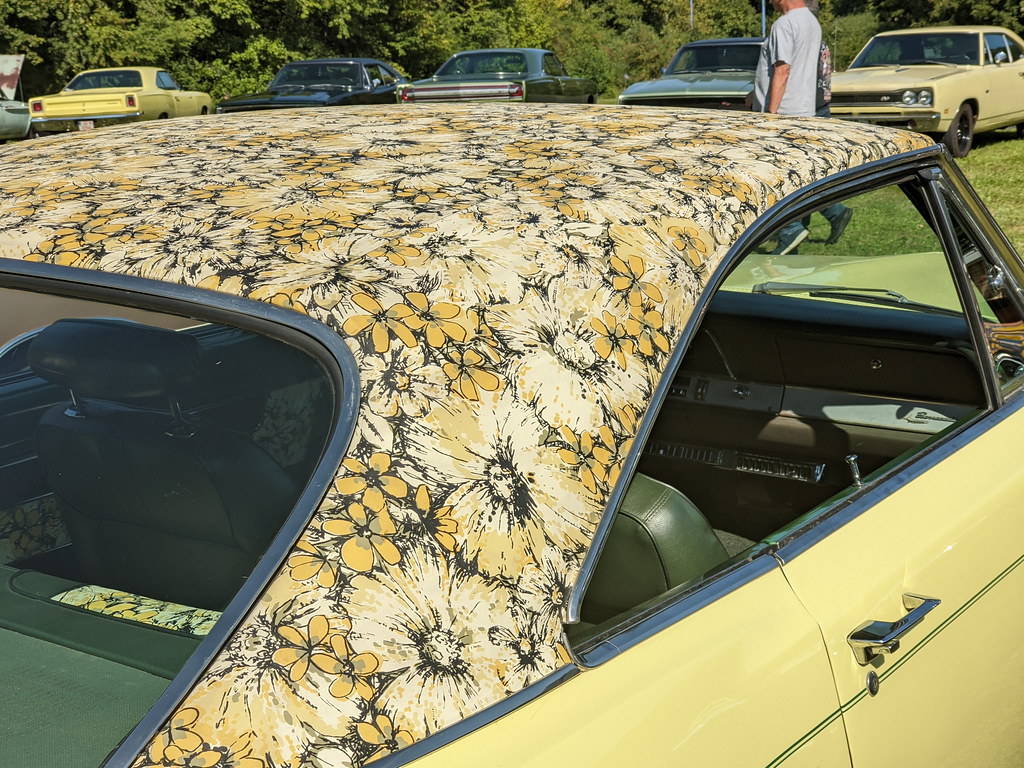
7. **Plymouth Barracuda**Speaking of muscle car royalty, our next contender is none other than the Plymouth Barracuda, particularly those magnificent models from the early 1970s. This isn’t just a car; it’s a legend, cherished for its muscle car allure and the kind of raw performance that defined an entire generation of gearheads. The Barracuda, with its aggressive lines and powerful engine options, was a quintessential piece of American automotive swagger, a true embodiment of the era’s automotive bravado. It commanded respect, and it certainly commanded the road, or at least tried to.
However, beneath that undeniably cool exterior, the Barracuda, much like many of its contemporaries, shares the era’s rather cavalier disregard for modern safety features. Let’s be real, in the pursuit of raw power and head-turning design, occupant protection often took a backseat – and not a very well-protected one at that. The Barracuda’s design and its focus on pure speed meant that the engineers prioritized horsepower over sophisticated safety measures, making it inherently susceptible to serious accidents and injuries.
The big problem? A significant oversight was the glaring lack of modern restraint systems and crumple zones. Today, we take airbags, pre-tensioning seatbelts, and meticulously engineered crumple zones for granted – they’re literally designed to absorb impact energy and protect us in a crash. The Barracuda offered none of that sophisticated protection. In a significant impact, the car’s rigid structure essentially transferred immense forces directly to its occupants, turning even moderate collisions into potentially life-threatening events.
While it rightfully remains a collector’s favorite, a pristine piece of automotive art that commands high prices at auction, the Barracuda emphatically emphasizes the monumental advancements in car safety technology since its time. Its legacy is a powerful testament to the thrilling, no-holds-barred spirit of muscle car development, but also a sober reminder that the romance of raw power alone isn’t enough to safely navigate the demands of modern traffic. This is a car for admiring, not for daily dodging of distracted drivers.
Product on Amazon: Jada Toys Big Time Muscle 1:24 1973 Plymouth Barracuda Die-cast Car Red/Black, Toys for Kids and Adults
Brand: Jada
Binding: Toy Product Group: Toy
Price: 24.86 USD
Rating: 4.5 Total reviews: 85
Features:
1. Authentically licensed product from Plymouth
2. A true American muscle car, this 1973 Plymouth Barracuda has been brought to you in a 1:24 die – cast model
3. Crafted from durable materials such as 100% die – cast metal and premium rubber tires.
4. Our high – end casting method allows for feature rich details, such as an opening hood, doors, detailed interior, and trunk.
5. This premium die – cast model is a must have for any Plymouth collection
Shopping on Amazon >>
Car Model Information: 1971 Plymouth Barracuda
Caption: 1970 Hardtop Coupe
Name: Plymouth Barracuda
Manufacturer: Plymouth (automobile)
Production: 1964–1974
Assembly: Fenton, Missouri,Hamtramck, Michigan,Maywood, California,Windsor, Ontario
Layout: Front-engine, rear-wheel drive layout
Class: Pony car
Categories: 1970s cars, All articles with dead external links, All articles with unsourced statements, Articles with dead external links from February 2018, Articles with dead external links from January 2022
Summary: The Plymouth Barracuda is a two-door pony car that was manufactured by Chrysler Corporation from 1964 through 1974 model years.
The first-generation Barracuda was based on the Chrysler A-body and was offered from 1964 until 1966. A two-door hardtop (no B-pillar) fastback design, it shared a great majority of parts and bodywork with the Plymouth Valiant, except for the distinctive wraparound rear glass.
The second-generation Barracuda, though still Valiant-based, was heavily redesigned. Built from 1967 through 1969, it was available as a two-door in fastback, notchback, and convertible versions.
The third generation, offered from 1970 until 1974, was based on the Chrysler E-body, exclusive to it, and the slightly larger Dodge Challenger. A completely new design, the two-door Barracuda was available in hardtop and convertible body styles.
Get more information about: Plymouth Barracuda
Buying a high-performing used car >>>
Brand: Plymouth Model: Barracuda
Price: $54,999 Mileage: 12,468 mi.
Read more about: John Wick’s 1969 Mustang: How a Classic Car Became a Cinematic Icon
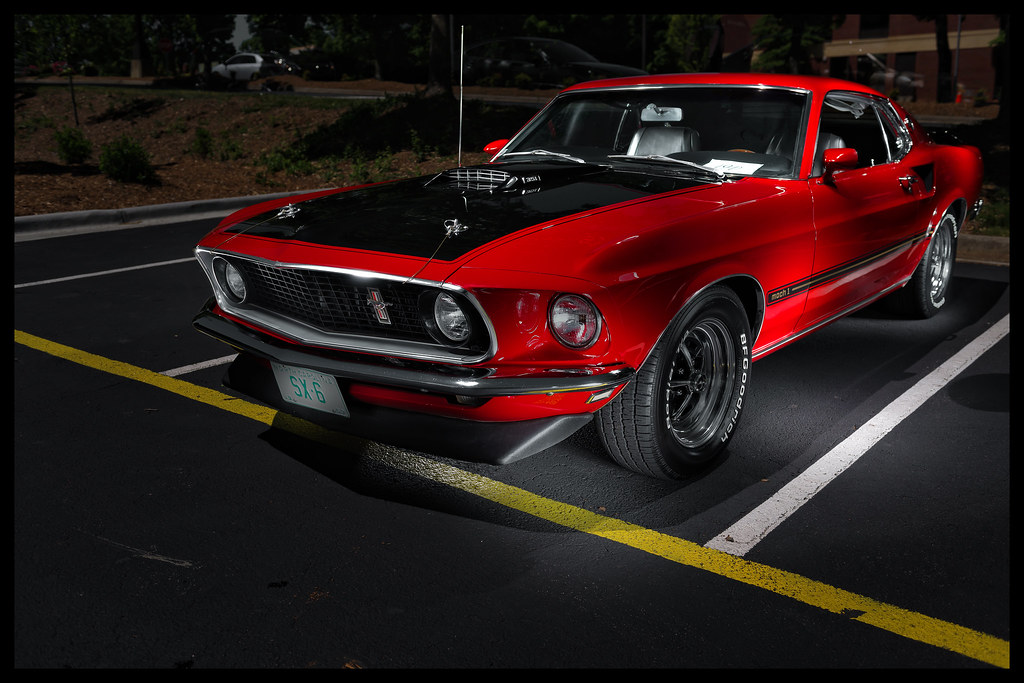
8. **Ford Mustang Mach 1**Now, for another American icon that truly roared, let’s talk about the Ford Mustang Mach 1, particularly the glorious 1969 iteration. This wasn’t just a car; it became an instant symbol of American muscle, a visceral, thumping embodiment of power and style that captivated an entire nation. Its powerful engine options – oh, the engines! – and distinctive, aggressive look attracted enthusiasts like moths to a flame. The Mach 1 was the kind of machine that made you want to hit the open road, windows down, and just *drive*.
But, and you knew this “but” was coming, like many, many cars of its vibrant, yet safety-challenged, era, the Mach 1 simply lacked the sophisticated, multi-layered modern safety features that we now consider standard. The unfortunate truth is that its design and engineering philosophy emphatically prioritized speed, raw performance, and that undeniable visual swagger over any real, meaningful need for protective measures. When you see a pristine Mach 1 today, it’s a work of art, but it’s also a rolling time capsule of a less-than-safe approach to motoring.
This lack of advanced occupant protection, combined with a hefty dose of horsepower, makes it genuinely dangerous on today’s roads. Imagine a vehicle with immense acceleration capabilities, but without the corresponding braking power, structural integrity, or driver assistance systems to handle an unexpected emergency. A sudden stop, a fast swerve, or an unforeseen impact could quickly escalate from an inconvenience to a truly catastrophic event. It’s a stark contrast to the modern Mustang, which, even in its most powerful forms, is engineered with decades of safety advancements.
So, while the Mach 1 is absolutely celebrated among classic car lovers and holds a hallowed place in automotive history, it illustrates the profound shift in automotive priorities toward comprehensive safety and driver protection. It’s a magnificent beast, yes, but one that belongs on a carefully curated display or a track day, not duking it out with minivans and SUVs on your morning commute. The thrill is undeniable, but the inherent risk is, for modern purposes, simply too great.
Product on Amazon: Hot Wheels 1:43 Scale Premium Culture Ford M1 Mustang
Brand: Hot Wheels
Binding: Toy Product Group: Toy
Price: 19.1 USD
Rating: 4.6 Total reviews: 88
Shopping on Amazon >>
Car Model Information: 2022 Honda Civic Sport
Name: Ford Mustang Mach 1
Manufacturer: Ford Motor Company
Assembly: Dearborn, Michigan
Production: 1969–1978,2003–2004,2021–2023
Class: Muscle car
BodyStyle: coupe
Layout: FR layout
Categories: 1970s cars, 2000s cars, 2020s cars, All Wikipedia articles written in American English, All articles needing additional references
Summary: The Ford Mustang Mach 1 is a combination performance and appearance package offered as an option for the Ford Mustang.
It first appeared in August 1968 for the 1969 model year, and ran through 1978. After a long hiatus it briefly returned in 2003-2004, and most recently between 2021 and 2023.
The first generation of the package, available with various engines, debuted at its hottest, then was progressively eroded in performance as emissions controls, unleaded gas, fleet mileage quotas, and higher gasoline prices undercut the “horsepower wars” that had originally spurred the option. Similarly, early packages included other performance upgrades, such as suspension, that were deleted in subsequent model runs, leaving only a wide array of external and interior upgrades.
As part of a Ford heritage program, the Mach 1 package returned in 2003 as a high-performance version of the New Edge platform. Visual elements paying homage to the 1969 model were integrated into the design. This generation of the Mach 1 was discontinued after the 2004 model year, with the introduction of the fifth generation Mustang.
The Mach 1 returned again in 2021 in the sixth generation Mustang, offering marginally more power than the high-performance 5.0 L Coyote V-8 in the base GT V8, but borrowing front and rear subframes from the Shelby GT350 and various parts from it and the Shelby GT 500 models. It was produced until the debut of the seventh generation Mustang following the 2023 model year.
Get more information about: Ford Mustang Mach 1
Buying a high-performing used car >>>
Brand: Ford Model: Mustang Mach 1
Price: $25,849 Mileage: 16,061 mi.
Read more about: John Wick’s 1969 Mustang: How a Classic Car Became a Cinematic Icon
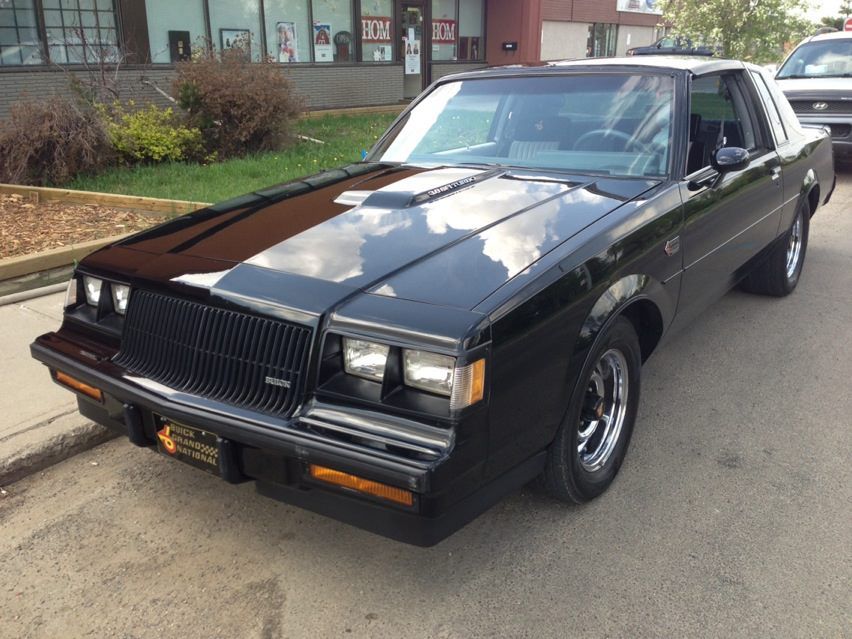
9. **Buick Grand National**Alright, prepare yourselves for a dose of turbocharged, blacked-out menace from the 1980s: the Buick Grand National. This car wasn’t just *a* performance icon; it was *the* performance icon of its time, a dark horse (or rather, a black stallion) that shattered expectations and etched its name into the annals of American automotive lore. With its notoriously powerful turbocharged engine and that sleek, sinister black exterior, it was a genuinely formidable machine, a true wolf in sheep’s clothing that could embarrass many a “sportier” car at the stoplight.
However, and this is where our conversation takes a critical turn, the Grand National’s blistering speed often outmatched its structural safety. It was a classic case of raw power evolving faster than the protective cocoon around the driver. The car’s design, while brilliant for performance, conspicuously lacked the sophisticated modern safety technologies that we now consider essential, such as airbags and advanced braking systems. Enthusiasts, myself included, reveled in its incredible performance, but let’s be honest, that exhilarating ride came with significant, often unacknowledged, risks.
Picture this: you’ve got a seriously fast, rear-wheel-drive monster, but its ability to stop or recover from a sudden loss of traction is, by modern standards, rudimentary at best. The 1980s were a wild time for power, but a relatively tame one for active and passive safety features. There were no electronic stability control systems, no traction control to catch you, and certainly no array of airbags to cushion you in an impact. It was pure, unadulterated power, and you were largely on your own to manage it.
Today, the Buick Grand National stands as a glorious, thundering reference point for just how far vehicle safety has evolved. It underscores the vital necessity for a holistic balance between blistering speed and robust security. We adore its legend, its unmistakable rumble, and its almost mythical status in the performance world. But as a daily driver on crowded, high-speed roads? This beautiful black beast is a testament to the past, reminding us that sometimes, the thrill really did come with too much peril.
Product on Amazon: Jada Toys 1:24 Fast & Furious – ’87 Buick Grand National, Glossy Black (99539)
Brand: Jada
Binding: Accessory Product Group: Toy
Price: 25.46 USD
Rating: 4.8 Total reviews: 1865
Features:
1. Country Of Origin : United States
2. As Seen In Fast & Furious, Dom’S Buick Grand National Has Been Taken Directly From The Big Screen And Brought To You In A 1:24 Scale Die – Cast Model
3. Crafted From Durable Materials Such As 100% Die – Cast Metal And Premium Rubber Tires.
4. Our High – End Casting Method Allows For Feature Rich Details, Such As An Opening Hood, Doors , Detailed Interior, And Trunk.
Shopping on Amazon >>
Car Model Information: 2022 Honda Civic Sport
Name: Buick Regal
Caption: 2020 Regal Sportback
Manufacturer: General Motors
ModelYears: Unbulleted list
Sp: us
Predecessor: Buick Skylark#Second generation (1968–1972),Buick Century
Successor: Buick LaCrosse
Categories: 1980s cars, 1990s cars, 2000s cars, 2010s cars, 2020s cars
Summary: The Buick Regal is a line of mid-size cars marketed by Buick since 1973. Serving as the premium mid-size/intermediate car of the Buick product range for nearly its entire production, the Regal initially served as the divisional counterpart of the Pontiac Grand Prix and Oldsmobile Cutlass Supreme; since the late 2000s, the model line has been derived from the Opel Insignia. The Regal also serves as the basis of the high-performance Grand National, Gran Sport (GS), and Buick GNX coupes.
Through its production, the Regal has been marketed under a wide variety of body styles, including two-door coupes and four-door sedans (currently in production), along with a 5-door liftback sedan and a 5-door station wagon; the latter (the 2018-2020 Regal TourX) was the first Buick station wagon marketed since the retirement of both the Century and Roadmaster Estates after 1996. The turbocharged LD5 3.8L V6 used in the second generation was used to showcase the motorsports presence of the brand; though offered with other vehicles (including Chevrolets and Pontiacs), the turbocharged engine is most commonly associated with the Regal. During the 1990s, the V6 regained forced induction, with a supercharger replacing the turbocharger.
In 1999, General Motors commenced sales of its vehicles in China, with the Buick Regal serving as its introductory model of the joint venture SAIC-GM. After 2004, Buick retired the model line in North America, as it replaced both the Regal and the Century with the Buick LaCrosse. Following the introduction of the second-generation Regal for China for 2008, the model line returned to North America for the 2011 model year, slotted slightly below the LaCrosse. Following the introduction of the sixth-generation Regal (sourced entirely from Opel) for 2018, GM sold Opel to PSA (now Stellantis), ending sales in North America after the 2020 model year. Currently, the Insignia B-derived Regal remains in production by SAIC-GM.
Get more information about: Buick Regal
Buying a high-performing used car >>>
Brand: Buick Model: Grand National
Price: $25,849 Mileage: 16,061 mi.
Read more about: Market Reconfiguration: Examining Why Leading EV Brands from 2023 Face New Pressures in 2024’s Evolving Landscape
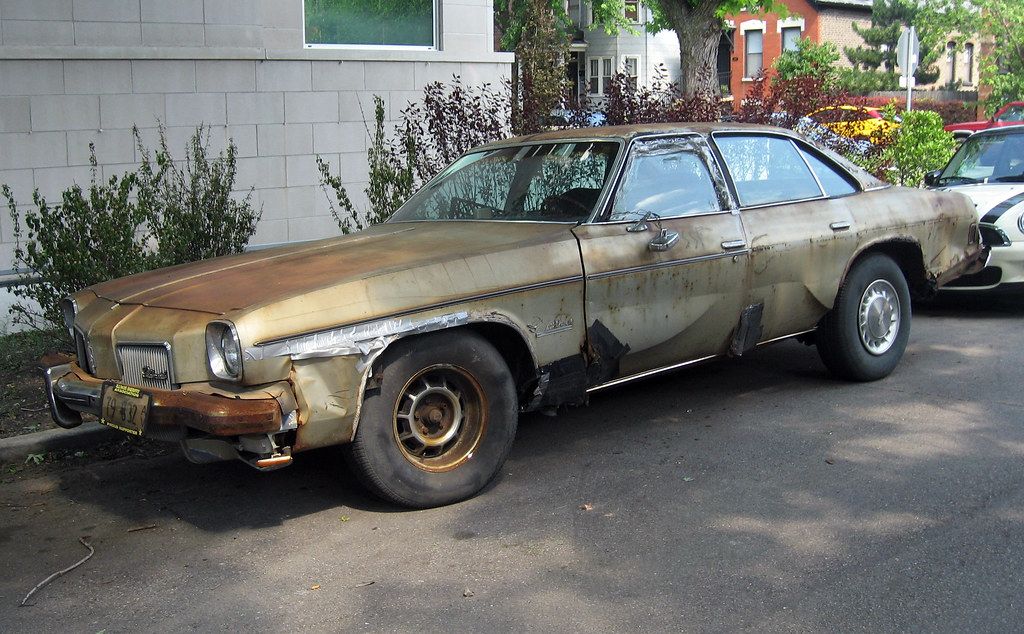
10. **Oldsmobile Cutlass Supreme**And now, for our final entry on this journey through dangerous American automotive history, we arrive at a true staple of the 1970s: the Oldsmobile Cutlass Supreme. This wasn’t a fire-breathing muscle car in the same vein as some of our earlier entries, but it perfectly combined luxury with accessible power, becoming an absolute sales phenomenon. It offered a compelling blend of comfort, style, and enough grunt under the hood to satisfy most drivers, making it a ubiquitous sight on American roads during its heyday.
Yet, despite its widespread appeal, the Cutlass Supreme was very much a product of an era defined by minimal safety regulations. The prevailing design philosophy, which heavily emphasized passenger comfort and opulent styling, often led to the unfortunate neglect of truly essential safety features. It was a different world back then, where the expectation of comprehensive crash protection simply didn’t exist in the same way it does now. The big, comfortable seats were lovely, but they weren’t designed to hold you securely in a dynamic situation.
The Cutlass Supreme’s heavy build, while contributing to a feeling of solidity, coupled with its notably outdated brakes, presented significant maneuverability challenges by today’s standards. Trying to stop a massive, heavy car from highway speeds with single-piston calipers and drum brakes (or early, less-effective discs) was a task requiring forethought, skill, and a fair amount of luck. Emergency braking or evasive steering in a vehicle of this heft, without modern power assists or electronic aids, was genuinely a white-knuckle affair.
So, while the Oldsmobile Cutlass Supreme is rightly admired for its elegance, its classic American styling, and its undeniable role in shaping the automotive landscape of the 1970s, it stands as a powerful testament to the automotive industry’s relentless journey towards enhanced safety measures over the decades. It’s a beautiful, comfortable cruiser, but one that inherently embodies the safety compromises of its time, making it a challenging and, frankly, risky proposition for the fast-paced, high-stakes driving environments of today.
An ending paragraph of the article.
Car Model Information: 2022 Honda Civic Sport
Name: Oldsmobile Cutlass Supreme
Manufacturer: Oldsmobile
Production: 1965–1997
Layout: FR layout
Successor: Oldsmobile Intrigue
Class: Personal luxury car
Caption: 1970 Oldsmobile Cutlass Supreme
Categories: 1960s cars, 1970s cars, 1980s cars, 1990s cars, All Wikipedia articles written in American English
Summary: The Oldsmobile Cutlass Supreme is a mid-size car produced by Oldsmobile between 1966 and 1997. It was positioned as a premium offering at the top of the Cutlass range. It began as a trim package, developed its own roofline, and rose during the mid-1970s to become not only the most popular Oldsmobile but the highest selling model in its class.
It was produced as a rear-wheel drive two-door hardtop, sedan, and station wagon into the 1980s, and a convertible through 1972. In 1988 Oldsmobile sought to capitalize on the brand equity of the Cutlass Supreme marque by replacing it with a downsized front-wheel drive model based on the General Motors W platform.
When production ended there was no direct replacement for the Cutlass Supreme, although the Intrigue introduced for 1998 was designed in size and price to replace all the Cutlass models.
Get more information about: Oldsmobile Cutlass Supreme
Buying a high-performing used car >>>
Brand: Oldsmobile Model: Cutlass Supreme
Price: $25,849 Mileage: 16,061 mi.
Read more about: Unearthing the Power: 14 Underrated Small-Block V8 Muscle Cars That Deliver Classic Style and Serious Punch on a Budget
Phew! What a ride, right? From exploding fuel tanks to treacherous handling, and from engine fires to rigid body structures that offered little protection, these iconic American cars truly show us how much the automotive world has evolved. It’s a testament to progress, a powerful demonstration that our obsession with horsepower, style, or affordability has thankfully, finally, been tempered by an unwavering commitment to occupant safety. While our hearts might still yearn for the raw, unfiltered experience of these magnificent machines, our modern brains (and our precious lives) unequivocally demand more. So next time you buckle up in your daily driver, take a moment to appreciate that meticulously engineered safety cocoon around you. It’s a far cry from the charming, but frankly terrifying, automotive adventures of yesteryear. Keep it safe out there, folks, and remember: sometimes the coolest car is the one that gets you home in one piece, every single time.


